Key takeaways
- The difference between GTIN vs UPC: A GTIN (Global Trade Item Number) is a unique identifier for a product, and a UPC (Universal Product Code) is a type of barcode format used to encode a GTIN.
- GTINs come in several formats, but the most popular are GTIN-12 (UPC) and GTIN-13 (EAN). UPCs are 12-digit codes while EANs are 13-digit codes.
- Businesses selling internationally should use EAN to ensure global compatibility, while U.S. and Canadian retailers typically use UPC.
- To get a valid GTIN/UPC, businesses must purchase them through GS1 to ensure global recognition. If you use third-party sellers, it may lead to issues.
- GTINs/UPCs are only necessary if you require your barcodes to be recognized outside of your organization. For internal inventory tracking, you can create your own custom barcodes using a barcode font or barcode generator.
- Proper use of GTINs ensures barcode accuracy, improves inventory tracking, and is required by most major retailers and online marketplaces.
When it comes to barcodes the most common thing we hear is “what’s the difference between GTIN and UPC?” So with that in mind, we decided to write this quick and easy guide on GTIN vs UPC, EAN, and beyond.
If you want to learn more than just GTIN vs UPC be sure to check out our Ultimate Barcoding Guide which covers everything there is to know about barcodes.
GTIN vs UPC what’s the difference?
If you’ve found yourself asking what’s the difference between GTIN vs UPC, you’re not alone. To put it simply when you purchase a barcode from an organization like GS1, you’re not actually buying a barcode. Instead, you’re buying a global trade item number– or GTIN– which is then encoded into a barcode. Once you have your GTIN, you can choose to encode it into many different barcode symbologies depending on your needs and location. UPC (Universal Product Code), and EAN (European Article Number), are a couple of examples.
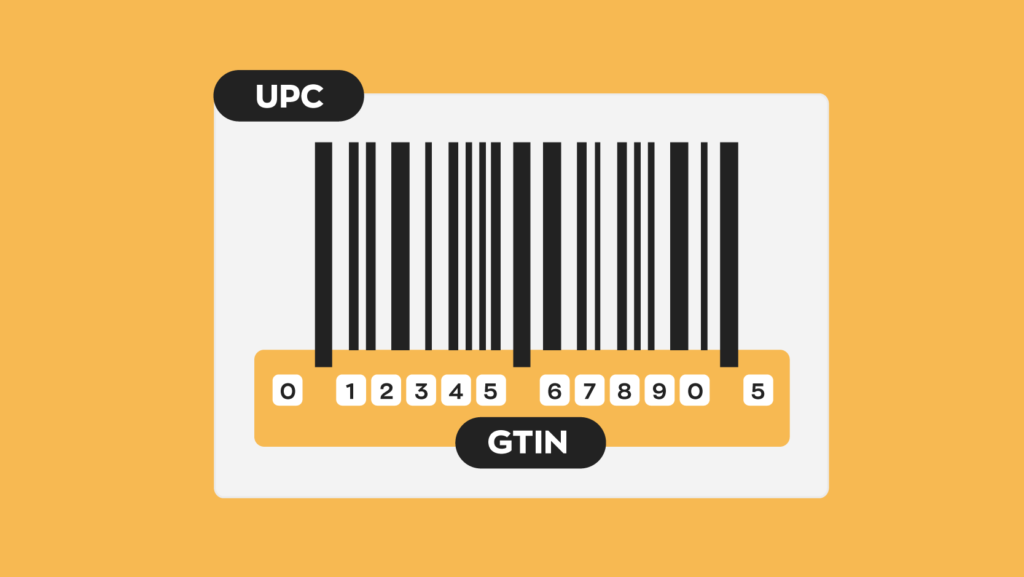
We know– that’s a lot of acronyms, so let’s break them down into more detail.
What is a GTIN?
As mentioned above a GTIN is a number that’s associated with a barcode, but it’s not just any number. As the name suggests, it’s a globally recognized number that’s tied to a specific product. GTINs are usually 8, 12, 13, or 14 digits long, and you can purchase them from GS1– more on that later.
The important takeaway is that “GTIN” itself is an umbrella term that refers to different number strings offered by GS1. Two GTINs cover most of the globe: UPC and EAN.
- GTIN-12/UPC is a 12-digit GTIN, typically used within the US and Canada.
- GTIN-13/EAN is a 13-digit GTIN, typically used outside of the US and Canada.
Despite being used regionally, UPCs and EANs are part of GS1’s international standards, meaning both are accepted (and readable) globally.
In both EAN and UPCs, the first 6-9 digits make up a “company prefix.” The company prefix identifies the company or business that owns the GTIN. The remaining numbers identify the specific product. Finally, the last number is the check digit, which functions as a way to validate the integrity of the barcode.
Is a GTIN a barcode?
In a way, yes. Instead of looking at it as UPC vs GTIN, you should really think of them as one and the same. If you look at a product’s barcode, you’ll notice a string of numbers underneath the black bars. That number is the product’s GTIN, and the barcode is what makes that number machine readable. So instead of thinking about it as GTIN vs UPC, try and think about it as GTIN = UPC.
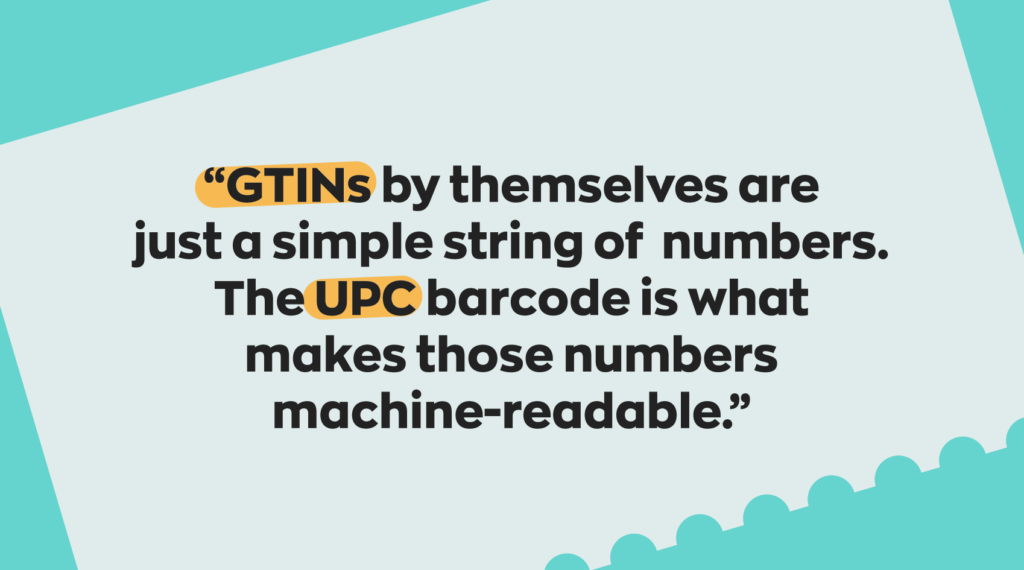
We could program machines to read these numbers instead of barcodes, but the comparatively intricate designs of numbers introduce potential issues. Misprints could render a number unreadable, and a machine might read an upside-down six as a nine (or vice-versa).
For this reason, businesses use barcode software for a number of things– like making sales and keeping track of inventory. Scanning barcodes is simply just a way to speed up the process of having to enter numbers manually.
Are there other kinds of GTINs?
Aside from UPC and EAN, there are two other major barcodes, the International Standard Book Number (ISBN) and Fulfillment Network Stock Keeping Unit (FNSKU). Both are a bit more complicated than UPC and EAN.
An ISBN is a separate identification number that refers to a book or other similar product. It’s important to note that an ISBN does not replace a GTIN.
Traditional paper books have both. Retailers use the GTIN to keep track of stock levels, and the ISBN protects the book’s copyright. On the other hand, eBooks have no GTIN but use a different ISBN than their physical counterparts for copyright purposes.
The FNSKU is an Amazon-specific barcode used by the Fulfilment by Amazon (FBA) system.
The FBA system allows sellers to ship their products to Amazon, which stores them in warehouses until they’re sold. When you sell your product, Amazon will ship the package directly to the seller. The FNSKU is what Amazon uses to link these products to the merchant’s Amazon Seller account.
Do you need a GTIN to create barcodes?
No. If you’re just using barcodes within your organization for things like inventory management you could opt to make your own barcodes using a code 39 barcode font. But if you want to use your barcodes externally, you absolutely need to register them with GS1.
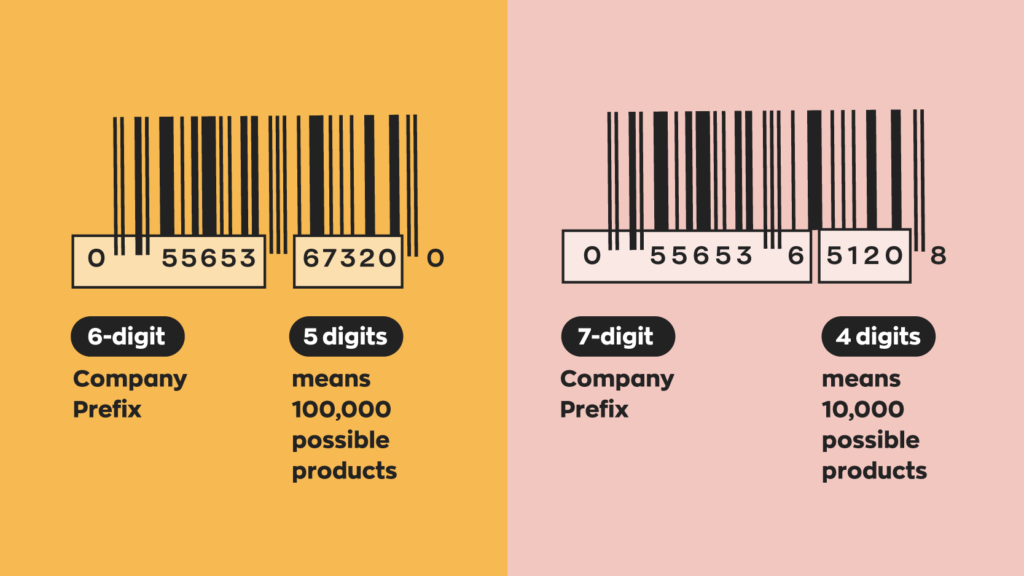
GTINs (and by extension, barcodes) aren’t just some random numbers. They’re all unique, and each one comes from the same place: GS1. There are also a lot of them (over a trillion!) in active use today.
There are instances where you can sell products without a barcode. If you had a brick-and-mortar and sold things like handmade crafts, vintage products, and so on, you could get away with using non-registered barcodes. However, if you wanted to sell through any other retail store or through an ecommerce platform, you’ll need to use registered barcodes.
Where can I buy GTINs?
We’ve mentioned GS1 multiple times throughout this article, and there’s a good reason for that. GS1 is an international non-profit organization and is the only global provider of GTINs and the accompanying EAN/UPC barcodes.
Fortunately, getting a GTIN is pretty simple. From the GS1 website, you can select whether you want an individual barcode or multiple with a company prefix.
Individual barcodes cost $30 USD and have no renewal fee. If you need more than one barcode, you should consider getting a company prefix. For these barcodes, your initial fee will depend on how many barcodes you need. Keep in mind that GS1 will require an annual renewal fee to keep these barcodes active.
We partnered with GS1 to create our inFlow GTIN Barcode Shop to make it simple to purchase barcodes. This partnership is completely commission-free so you’ll pay the same through our barcode shop as you would directly from GS1.
Do I have to purchase barcodes through GS1?
In the past, you could get away with buying barcodes from third-party vendors, but in recent years companies like Amazon have begun to crack down on these practices. For this reason, it’s best to avoid them altogether.
That doesn’t mean that all third-party vendors are scammers, though. Up until the mid-2000s, GS1 did sell codes, granting resell rights to whoever bought the GTIN number. There are millions of these codes still available, but they’re not part of the GS1 database.
This is where issues would arise if you used a third-party vendor to purchase your barcodes. Many retailers (like Amazon) check UPCs against the official GS1 database. If the GTIN you provide isn’t registered within the GS1, GEPIR, or ISBN.org database, your product will be removed. In severe cases, you may lose the ability to create new product listings.
In short– go through GS1. The few pennies you might save aren’t worth the risk.
How do barcodes fit into my workflow?
If you decide to implement barcodes into your business, you’ll save loads of time in your daily workflow. Using barcoding systems like inFlow allows you to connect barcodes to the products in your database. This means a simple scan could bring up things like product details, location, amount of available inventory, and more.



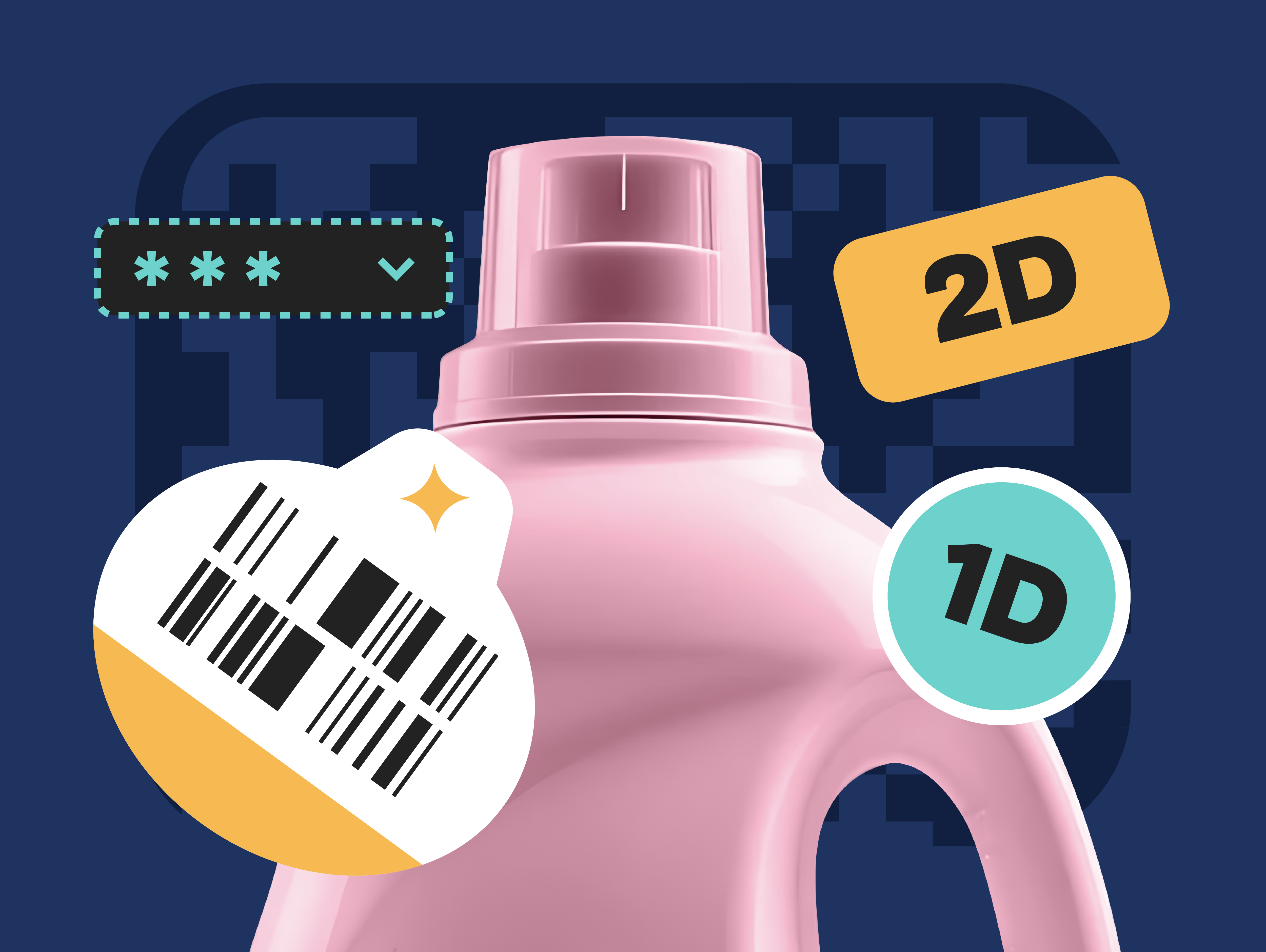
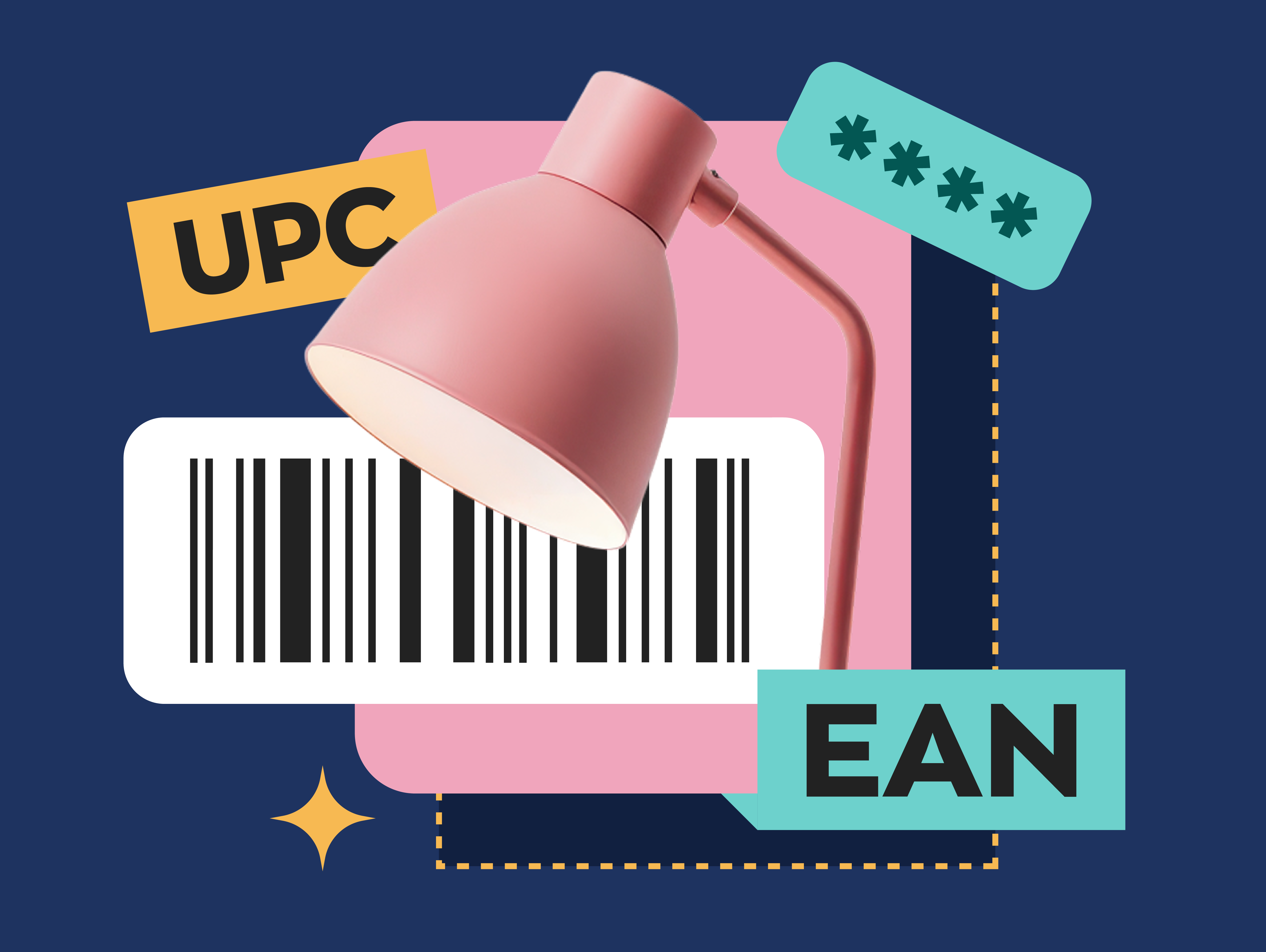
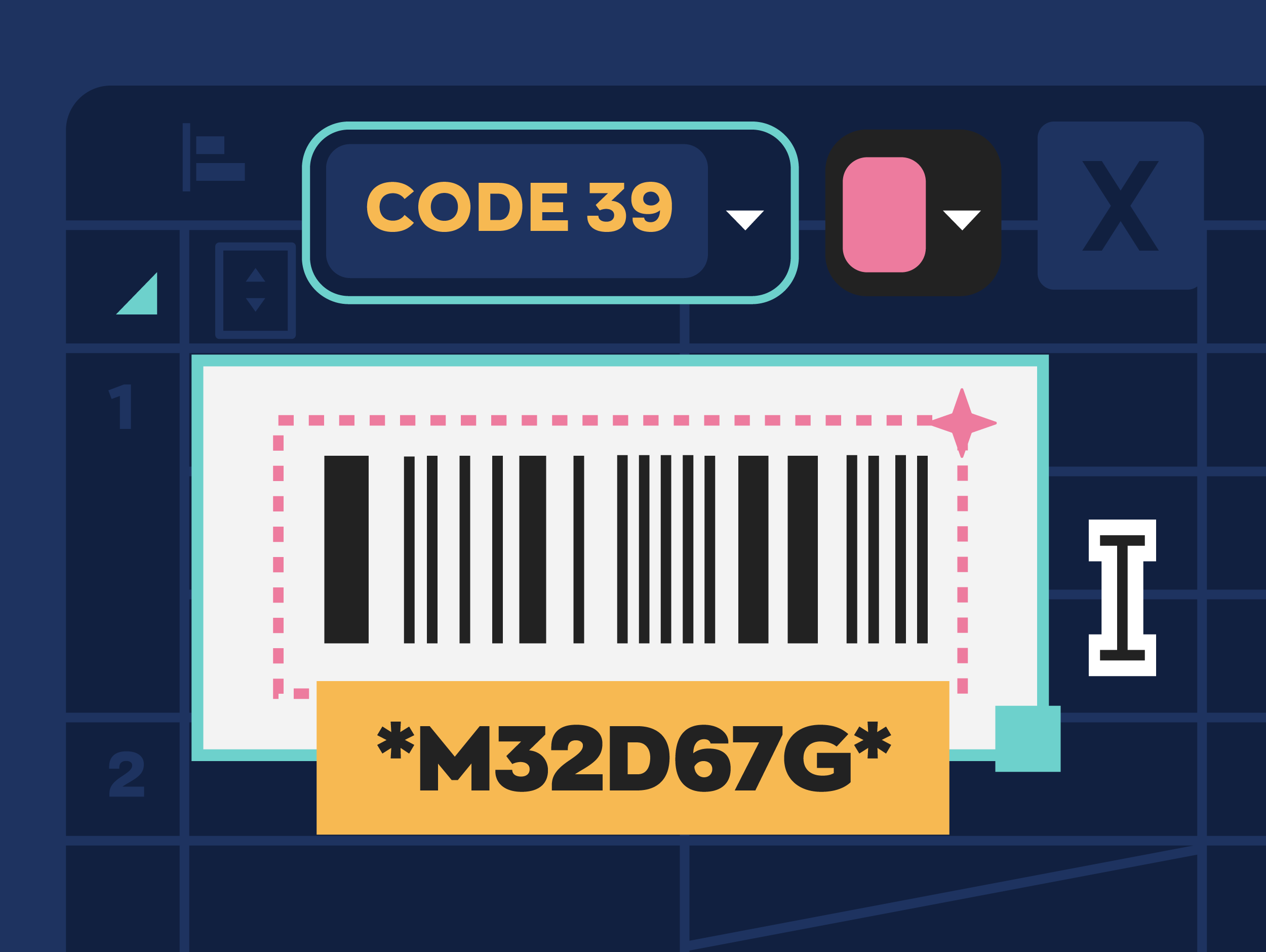
0 Comments